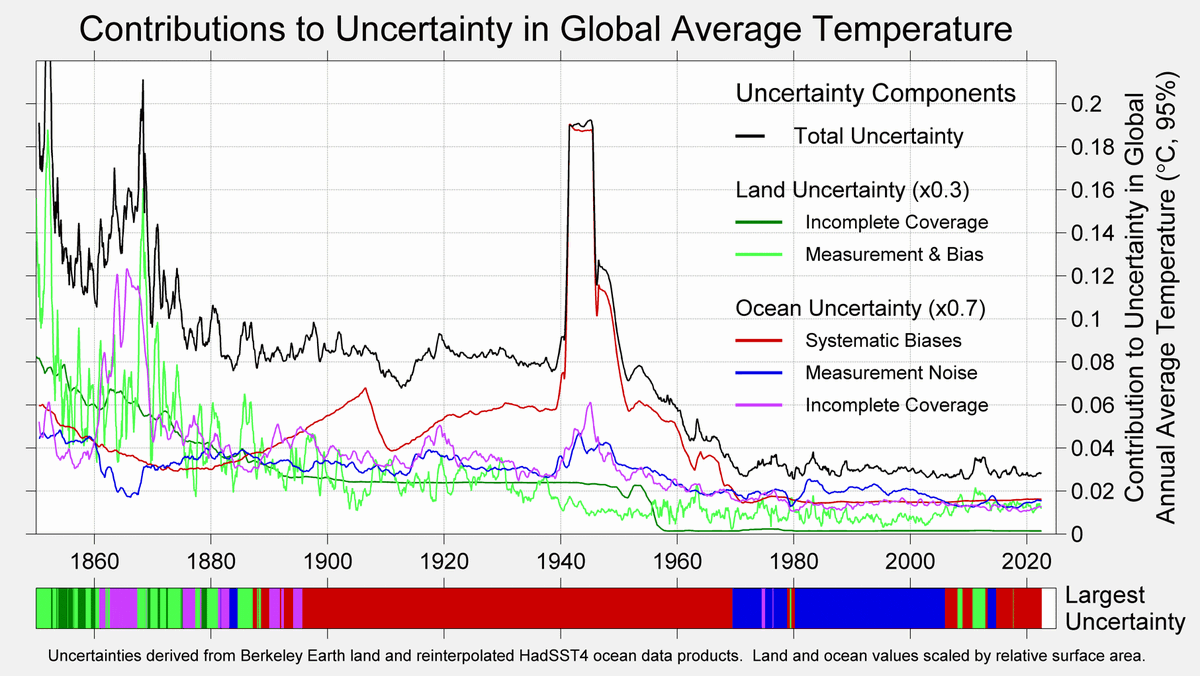This is getting ridiculous.
OISST provides a real-time daily index of ocean surface temperature (60 S - 60 N). For the last month it has been continuously reading higher than in any previous year and still shows no sign of settling.
OISST provides a real-time daily index of ocean surface temperature (60 S - 60 N). For the last month it has been continuously reading higher than in any previous year and still shows no sign of settling.

Ocean temperature anomaly patterns from OISST.
Above average temperature nearly everywhere. Major heatwave in the Northern Pacific and near South America. The latter is likely a developing El Niño, though not official till it spreads westward.
climatereanalyzer.org/clim/sst_daily/
Above average temperature nearly everywhere. Major heatwave in the Northern Pacific and near South America. The latter is likely a developing El Niño, though not official till it spreads westward.
climatereanalyzer.org/clim/sst_daily/

OISST daily average ocean temperatures presented as anomalies from the 1982-2011 mean. Currently the highest anomaly value on record, and sharply above every other year for this date. 

• • •
Missing some Tweet in this thread? You can try to
force a refresh

 Read on Twitter
Read on Twitter








